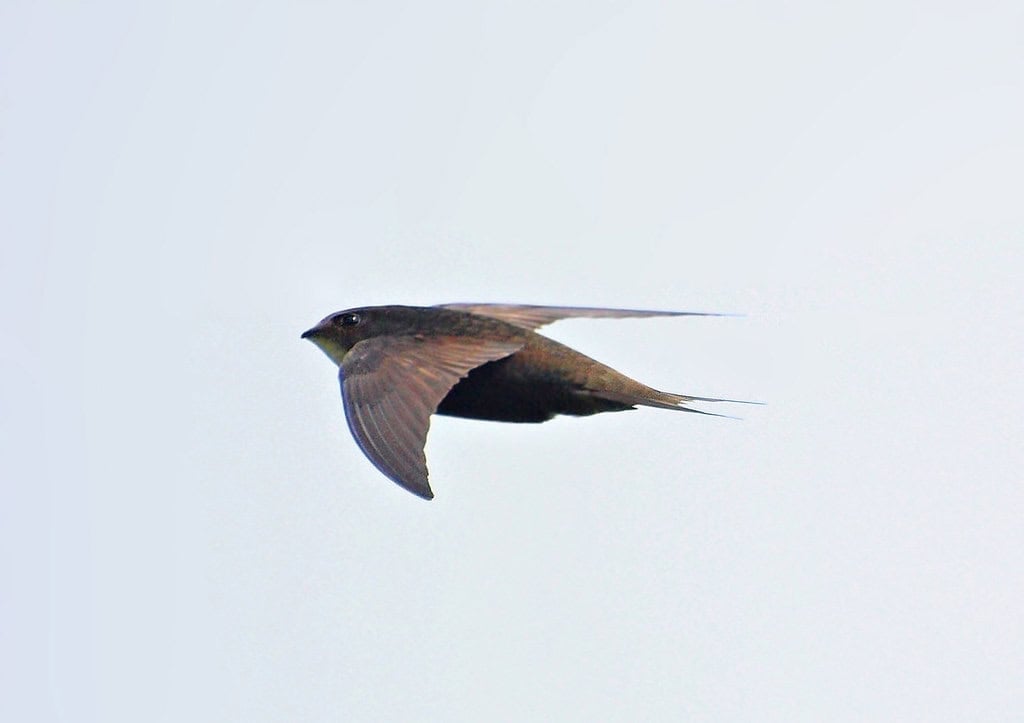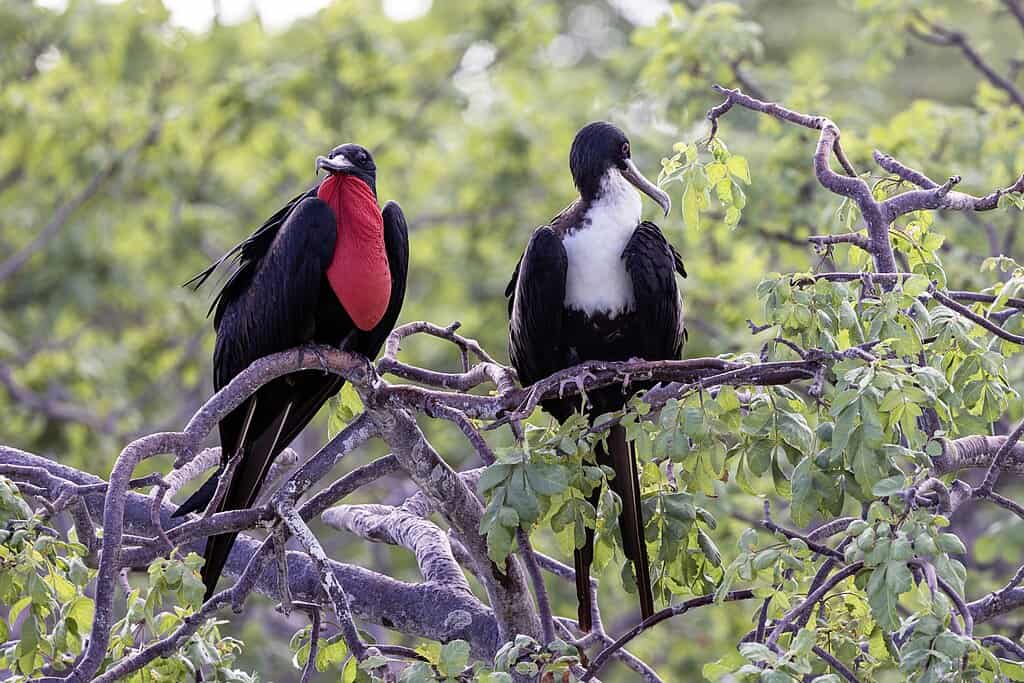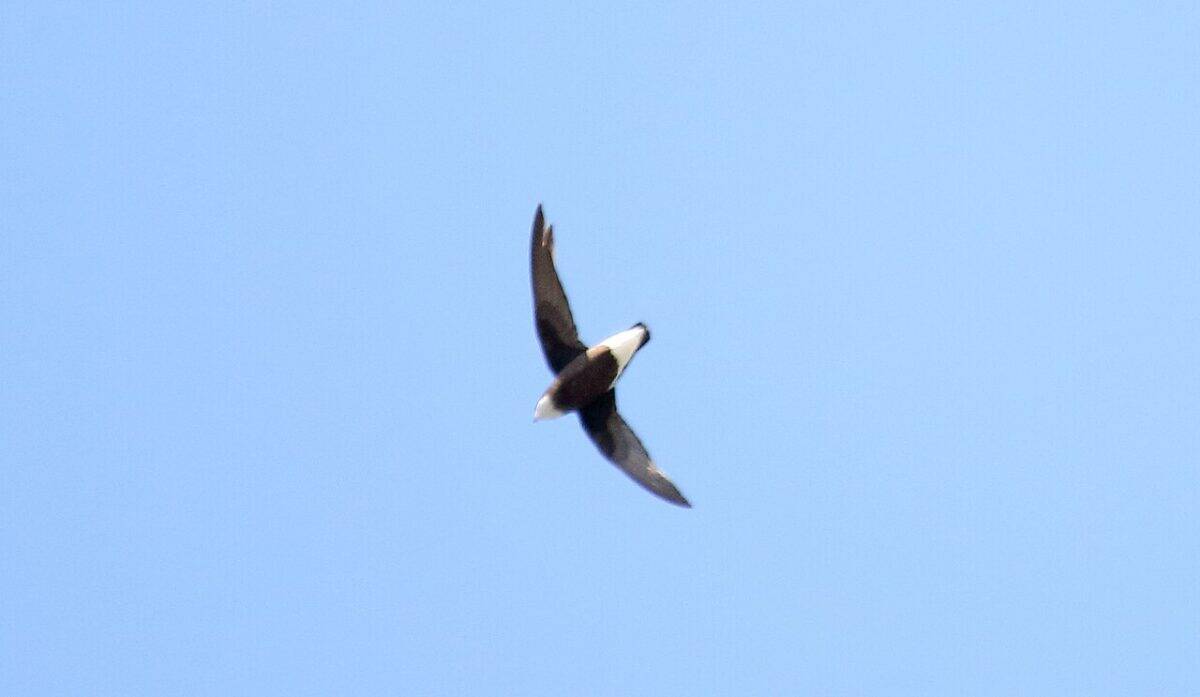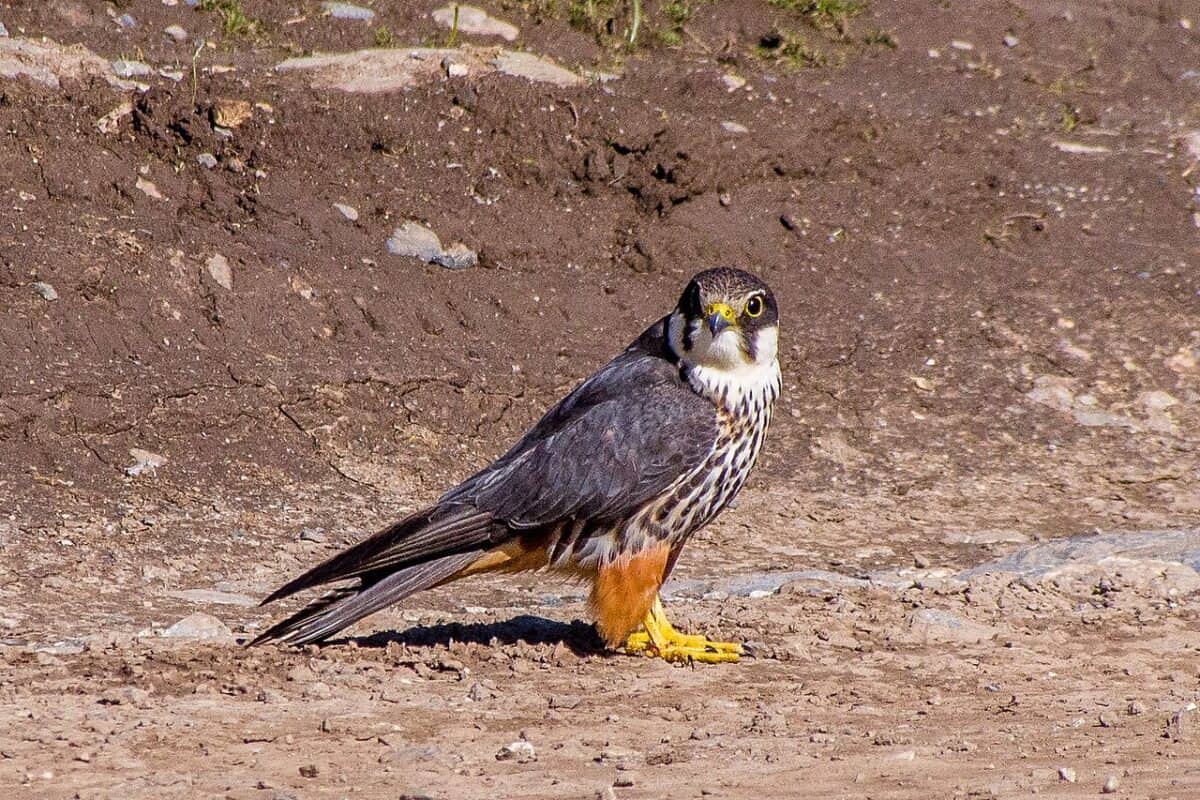The sky serves as both highway and habitat for some of Earth’s most remarkable aviators. While most birds regularly touch down to rest, feed, or nest, certain species have evolved extraordinary endurance capabilities that allow them to remain airborne for days, weeks, or even months without landing. These marathon fliers push the boundaries of physical endurance through specialized adaptations and remarkable physiological capabilities. From crossing vast oceans to circumnavigating the globe, these birds demonstrate nature’s ingenious solutions to the challenges of long-distance flight. Let’s explore 13 remarkable bird species that can stay aloft for extended periods, defying gravity and our understanding of biological limits.
Common Swift (Apus apus)

The Common Swift holds the record for the longest continuous flight of any bird. Research using lightweight electronic tags revealed these birds can stay airborne for up to 10 months without landing. Young swifts leave their nest and may not land again until they return to breed the following year. During this time, they eat, drink, sleep, and even mate while flying. They have adapted to perform all life functions in the air, catching insects and airborne spiders for food and drinking by flying through raindrops or skimming water surfaces. Their specialized anatomy includes short legs useful only for clinging to vertical surfaces, making them poorly suited for perching or walking but perfectly adapted for their aerial lifestyle. Common Swifts can even enter a state of unihemispheric sleep, where one half of their brain remains alert while the other rests, allowing them to maintain flight continuously.
Alpine Swift (Tachymarptis melba)

The Alpine Swift, a larger relative of the Common Swift, has been documented flying continuously for over six months. These birds breed in mountainous regions from southern Europe to the Himalayas but spend their non-breeding season migrating to sub-Saharan Africa. Research using geolocators has confirmed they can remain airborne throughout this entire journey and during their wintering period. With a wingspan of up to 22 inches, Alpine Swifts have evolved extremely efficient gliding techniques that minimize energy expenditure. They feed exclusively on aerial insects and gather drinking water by flying through rain or collecting morning dew that forms on their feathers. Like their common swift relatives, they’ve developed the ability to sleep while flying, though they occasionally take brief rests in cliff crevices or caves during severe weather conditions. Their remarkable aerial endurance makes them symbols of freedom and has inspired numerous poets and writers throughout history.
Great Frigatebird (Fregata minor)

The Great Frigatebird can stay airborne for up to two months without landing. These impressive seabirds have the largest wing-area-to-body-weight ratio of any bird, which allows them to soar effortlessly on thermal currents with minimal energy expenditure. Research using GPS tracking devices revealed that frigatebirds frequently engage in multi-day flights over the open ocean. Unlike many seabirds, frigatebirds cannot land on water despite spending most of their lives over the ocean. Their feathers lack waterproofing oils, and they would become waterlogged and potentially drown if they attempted to rest on the sea’s surface. Instead, they’ve developed remarkable aerial feeding techniques, snatching flying fish mid-air or harassing other seabirds until they regurgitate their catch. During long flights, frigatebirds can enter short periods of sleep lasting just seconds or minutes, alternating which half of their brain remains active—a phenomenon called unihemispheric slow-wave sleep that allows them to maintain altitude while resting.
Wandering Albatross (Diomedea exulans)

The Wandering Albatross boasts the largest wingspan of any living bird—up to 11.5 feet—and can stay aloft for months during its foraging trips. These magnificent seabirds have mastered a flying technique called dynamic soaring, which allows them to extract energy from wind gradients above the ocean’s surface. By repeatedly climbing into stronger winds at higher altitudes and then turning to glide back down with the wind, they can travel thousands of miles without a single wing flap. GPS tracking studies have documented individual birds circumnavigating the entire Southern Ocean multiple times per year, covering distances exceeding 75,000 miles annually. Unlike frigatebirds, albatrosses can and do land on the ocean’s surface to feed and rest, but they’re capable of remaining airborne for incredibly extended periods when necessary. Their heart rates while flying are nearly identical to when resting, demonstrating their remarkable flying efficiency. Sadly, these marathon fliers face significant threats from longline fishing operations and plastic pollution, leading to concerning population declines.
Bar-tailed Godwit (Limosa lapponica)

The Bar-tailed Godwit holds the record for the longest non-stop migration flight of any land bird. These shorebirds regularly fly from Alaska to New Zealand—a journey of approximately 7,500 miles—without stopping for food, water, or rest. This remarkable migration takes 8-10 days of continuous flight over the open Pacific Ocean. Before departure, godwits undergo physiological transformations, doubling their body weight by accumulating fat reserves that fuel their non-stop journey. They also reduce the size of internal organs not essential for flight to minimize weight. Scientists using satellite transmitters have tracked individual birds making this incredible journey, including a female godwit that flew 7,145 miles in nine days without a break—equivalent to flying from New York to London and back without stopping. Unlike seabirds that can sleep during flight by shutting down half their brain, godwits likely take thousands of micronaps lasting just seconds each throughout their migration. Their remarkable endurance has made them symbols of determination in many Pacific island cultures, where their annual arrival is celebrated.
Arctic Tern (Sterna paradisaea)

The Arctic Tern completes the longest known migration of any animal, traveling from the Arctic to the Antarctic and back each year—a round trip of roughly 44,000 miles. While these birds do make occasional stops during their migration, they can fly for several days non-stop when crossing oceans. Arctic Terns experience more daylight than any other creature on Earth because they follow summer between the poles, breeding during the northern summer and then flying to the southern hemisphere to enjoy the austral summer. Remarkably, these birds live up to 30 years, meaning a single tern might fly more than 1.5 million miles during its lifetime—equivalent to three round trips to the Moon. Their exceptional navigation abilities allow them to maintain consistent routes year after year with remarkable precision. Arctic Terns feed primarily on fish and small marine creatures, which they catch by diving from flight into the water. While they do land more frequently than some birds on this list, their ability to undertake multi-day oceanic crossings without rest demonstrates exceptional endurance.
Sooty Shearwater (Ardenna grisea)

Sooty Shearwaters undertake one of the longest annual migrations of any bird, flying a round-trip circuit of approximately 40,000 miles between their breeding grounds in New Zealand and their feeding areas in the North Pacific. During these vast journeys, they regularly make non-stop flights covering 3,000 miles or more without landing. Tracking studies have revealed these birds maintain an average speed of 34 mph during migration and can fly continuously for up to 5-6 days when crossing long stretches of open ocean. Sooty Shearwaters follow a figure-eight pattern around the Pacific Ocean, taking advantage of global wind patterns to minimize energy expenditure. They’ve evolved specialized salt glands that allow them to drink seawater and excrete excess salt, eliminating the need to find fresh water during their oceanic crossings. Like many long-distance migrants, these birds undergo dramatic physiological changes before migration, accumulating fat reserves that can constitute up to 40% of their body weight to fuel their journey. Their population numbers in the tens of millions, making their annual migration one of the most massive movement of biomass on the planet.
White-throated Needletail (Hirundapus caudacutus)

The White-throated Needletail, sometimes called the Spine-tailed Swift, is possibly the fastest bird in powered horizontal flight, capable of speeds exceeding 105 mph. These aerial specialists spend almost their entire lives on the wing, landing only during breeding season. Like their swift relatives, they have tiny feet used primarily for clinging to vertical surfaces and are virtually incapable of perching or walking on flat ground. White-throated Needletails migrate between their breeding grounds in Asia and wintering areas in Australia, a journey during which they can remain airborne for days or weeks at a time. They feed exclusively on flying insects, including beetles, flies, bees, and winged ants, which they catch using their wide gape while in flight. Their name comes from the pointed, spine-like projections at the end of their tail feathers, which may provide aerodynamic stability during their high-speed aerial maneuvers. Unlike many birds, they can even drink on the wing by skimming water surfaces. Unfortunately, these remarkable fliers face population declines due to habitat loss in both their breeding and wintering ranges.
Great Shearwater (Ardenna gravis)

The Great Shearwater undertakes a transequatorial migration that follows a figure-eight pattern across the Atlantic Ocean, covering approximately 25,000 miles annually. During this circular journey, these birds can remain in flight for several consecutive days when crossing vast stretches of open ocean. They breed on remote islands in the South Atlantic, including Tristan da Cunha and Gough Island, before migrating northward to feed in the productive waters off Newfoundland and Greenland. Great Shearwaters, like their sooty cousins, have evolved specialized salt glands that allow them to drink seawater and excrete the excess salt through their nostrils. These adaptations enable them to remain independent of freshwater sources during their extensive oceanic journeys. Studies using geolocators have documented individual birds making non-stop flights exceeding 3,000 miles in just a few days. Though they do land on water to feed and rest more frequently than some birds on this list, their ability to maintain flight for extended periods during migration qualifies them as exceptional endurance fliers. Their flight style involves alternating between powerful wing beats and gliding, which maximizes energy efficiency over long distances.
Magnificent Frigatebird (Fregata magnificent)

The Magnificent Frigatebird, like its great frigatebird relative, has evolved for a life spent almost entirely on the wing. These birds can soar for up to a week without landing, circling on thermal currents with barely a wingbeat. Male magnificent frigatebirds are known for their dramatic scarlet throat pouches, which they inflate like balloons during courtship displays. Their wingspan can reach over 7 feet, yet they weigh just 3-4 pounds, giving them an exceptionally low wing loading that enables effortless soaring. Magnificent frigatebirds are unable to land on water despite their oceanic lifestyle—their feathers lack waterproofing oils, and their legs are poorly developed for swimming. Instead, they’ve become aerial pirates, harassing other seabirds until they drop or regurgitate their catches. They also snatch flying fish and squid that leap from the water’s surface. GPS tracking has shown these birds can fly continuously for up to 6-7 days during foraging trips, sleeping for short periods while maintaining altitude using air currents. Their exceptional flying abilities and distinctive appearance have earned them the nickname “man-o’-war birds” among sailors.
Eurasian Hobby (Falco subbuteo)

The Eurasian Hobby is a swift falcon that can undertake multi-day flights during its migration between Europe and Africa. While not as well-studied as some other species on this list, tracking data indicates these birds can fly continuously for up to 2-3 days when crossing the Mediterranean Sea and Sahara Desert. Hobbies have aerodynamically efficient wings that allow them to maintain high speeds with relatively low energy expenditure. They’ve evolved remarkable hunting techniques that let them capture prey while remaining airborne, specializing in catching dragonflies, swallows, and even bats during flight. Hobies are among the few birds that can consistently catch swifts and swallows—themselves aerial specialists—demonstrating their exceptional flying abilities. During migration, these falcons maintain average speeds of about 30 mph but can accelerate to over 100 mph during hunting dives. Unlike many migrating birds that gorge before long flights, hobbies feed opportunistically throughout their journey, catching insects without needing to land. Their name comes from the Old French “hobet,” meaning a small hawk, and they feature prominently in medieval falconry literature for their spirited nature and aerial prowess.
Wilson’s Storm Petrel (Oceanites oceanicus)

Wilson’s Storm Petrels are tiny seabirds weighing just 1.5 ounces, yet they can remain airborne for days during their foraging trips and migrations. These diminutive birds breed in Antarctica and the subantarctic islands before migrating to the North Atlantic and North Pacific for the southern winter—one of the longest migrations of any bird relative to its size. Their distinctive feeding behavior, called “walking on water,” involves hovering with their feet touching the ocean’s surface while picking tiny crustaceans and fish from the water. Though they occasionally rest briefly on the water’s surface, they can maintain flight for 3-4 days continuously when crossing areas with limited food. Wilson’s Storm Petrels have developed specialized nasal glands that excrete excess salt, allowing them to drink seawater and remain independent of freshwater sources during their oceanic journeys. Their remarkable navigational abilities guide them across thousands of miles of seemingly featureless ocean to return to their breeding colonies each year with pinpoint precision. Despite their tiny size, individual birds may live 20 years or more, potentially covering over half a million miles during their lifetime.
Common Tern (Sterna hirundo)

The Common Tern, while not as famous for non-stop flight as some other species, can remain airborne for 2-3 days during portions of its impressive migration between northern breeding grounds and wintering areas in South America and Africa. Tracking studies have documented individual terns making non-stop flights of over 1,800 miles when crossing the Atlantic Ocean or Caribbean Sea. Common Terns possess extremely streamlined bodies that minimize drag during flight, allowing them to maintain consistent speeds of 20-25 mph during migration. Unlike many seabirds that soar on air currents, terns primarily use active flapping flight, making their endurance all the more impressive. They’ve developed specialized techniques for sleeping during flight, though the exact mechanisms remain less documented than in swifts or frigatebirds. Common Terns are master anglers, hovering momentarily before plunging into water to catch small fish—a feeding technique they can employ without extended landings. Their extraordinary homing abilities allow them to return to the exact same nesting site year after year, with some colonies having existed in the same locations for centuries. These graceful fliers have inspired countless artists and writers with their elegant flight patterns and association with maritime settings.
The Incredible Adaptations of Marathon Fliers

The extraordinary birds featured in this article represent nature’s pinnacle of aerial endurance and efficiency. Through millions of years of evolution, these species have developed remarkable adaptations that allow them to defy our conventional understanding of biological limits. From the Common Swift’s 10-month aerial lifestyle to the Bar-tailed Godwit’s non-stop transoceanic crossing, these birds demonstrate how specialized anatomical features and physiological mechanisms can overcome seemingly impossible challenges. Their lightweight, aerodynamic bodies, efficient respiratory systems, and specialized brain functions that enable sleep during flight all contribute to their remarkable capabilities. As climate change alters global wind patterns and human activities threaten critical habitats along migratory routes, many of these aerial marathoners face uncertain futures. By understanding and appreciating these extraordinary avian achievements, we gain not only scientific insights but also inspiration from some of nature’s most impressive endurance athletes.
- 14 Myths About Sharks That Simply Are Not True (And 1 That Totally Are) - August 19, 2025
- 9 Shark Behaviors That Are Misunderstood And 4 That Are Real Threats - August 19, 2025
- 15 Strongest Animals by Body Size - August 19, 2025

